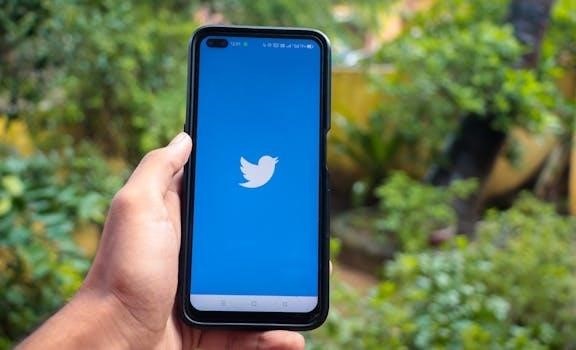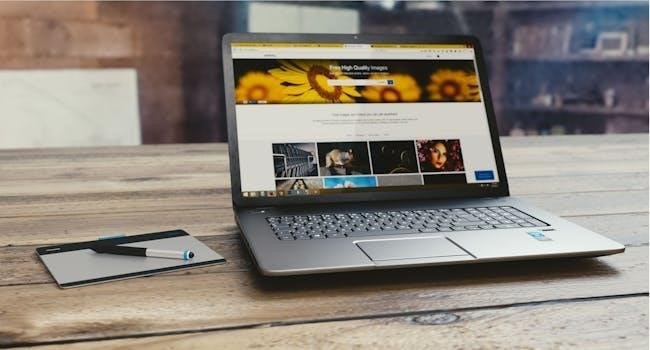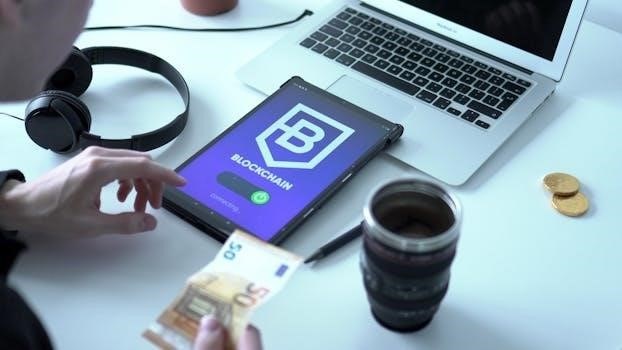Government initiatives, like the Affordable Connectivity Program (ACP), aim to bridge the digital divide by providing discounted or free tablets to eligible households. These programs ensure access to technology, supporting education, work, and healthcare.
Overview of Government Initiatives
Several government initiatives, such as the Affordable Connectivity Program (ACP) and Lifeline, are designed to provide low-income households with access to essential communication technologies. These programs offer discounts on internet services and devices, including tablets, to ensure that everyone can participate in the digital age. The ACP, for instance, provides a one-time discount for the purchase of a tablet and a monthly discount on internet service. Lifeline, another key program, also helps eligible households afford communication services. These programs operate through partnerships with internet service providers and device manufacturers, creating a network of support for those who need it most. The goal is to promote digital inclusion and bridge the gap for individuals and families, making education, healthcare, and employment opportunities more accessible through technology. The programs aim to empower communities by increasing access to essential resources in a digital world.

Eligibility for Free Tablet Programs
Eligibility for free tablet programs typically hinges on income levels or participation in government assistance programs. These programs aim to support low-income families with technology access.
Income-Based Requirements
To qualify for free tablet programs, applicants often must meet specific income-based criteria. These requirements typically involve having a household income that falls below a certain percentage of the Federal Poverty Guidelines. For instance, many programs target households with incomes at or below 200% of the poverty level. To verify income eligibility, applicants may need to submit documentation such as tax returns, pay stubs, or statements of benefits from government assistance programs. The specific income thresholds can vary depending on the program and the location, so it’s essential to check the specific guidelines of the program you are applying for. These requirements are put in place to ensure that the free tablet programs reach those in the most need, providing essential technological resources to those who might otherwise not be able to afford them, supporting education, employment, and access to important online resources.
Participation in Government Assistance Programs
Eligibility for free tablet programs often extends to individuals and families who are already enrolled in various government assistance programs. This approach aims to streamline the application process and ensure that those who already qualify for aid receive the benefits of technology access. Common qualifying programs include Medicaid, Supplemental Nutrition Assistance Program (SNAP), and WIC (Women, Infants, and Children). Other programs, such as Federal Housing Assistance, Supplemental Security Income (SSI), and Veterans Pension or Survivor Benefits, can also make applicants eligible. Participation in these programs typically serves as proof of need, simplifying the application process for free tablets. Proof of enrollment, such as a benefit award letter or a statement of benefits, is generally required. This linkage between existing assistance programs and free tablet initiatives helps to efficiently connect those in need with valuable digital resources.

Application Process for Free Tablets
The application process often involves applying online through the ACP website or contacting local social services. Required documentation, like income proof, is essential for verification, ensuring program eligibility.
Applying Online via ACP Website
To initiate the application for a free tablet, the primary method is often through the official Affordable Connectivity Program (ACP) website. This online portal streamlines the process, allowing eligible individuals to apply from the comfort of their homes. The first step involves accessing the ACP website and locating the application section. Users will typically be prompted to create an account or log in if they already have one. The online form requires detailed personal information such as name, address, and contact details, as well as information regarding income and participation in qualifying government assistance programs. Navigating through the website, applicants will find clear instructions on each step, ensuring a user-friendly experience. It is essential to carefully fill out every field, providing accurate data to avoid delays or rejection. Furthermore, the website guides users on the necessary supporting documents needed for verification, such as proof of income or participation in government programs. After completing the online form, individuals can submit it electronically, initiating the eligibility review process.
Submitting Required Documentation
After completing the online application form, the next crucial step is submitting the required documentation to verify eligibility for the free tablet program. These documents serve as proof of income and/or participation in qualifying government assistance programs. Applicants may be required to provide a copy of their most recent state, Federal, or Tribal tax return, or a current annual income statement from their job. Alternatively, a Social Security statement of benefits, unemployment or workers compensation statement, or a Federal or Tribal notice of participation in General Assistance may be accepted. Documentation proving participation in programs like SNAP, Medicaid, or Federal Housing Assistance is also often necessary. This can include benefit award letters, statements of benefits, or screenshots of online portals. For those receiving a Federal Pell Grant or participating in free or reduced-price school lunch programs, official financial aid award letters or letters from the school are required. These documents are essential for verifying eligibility and can typically be uploaded directly to the ACP website or submitted by mail if necessary, based on the specific instructions.

Participating Providers and Their Offers
Several internet and phone companies participate in ACP, offering free or discounted tablets. These providers include Q Link Wireless, Maxsip Telecom, and Moolah Wireless, each with varying co-pay amounts.
List of Internet and Phone Companies
Numerous internet and phone companies actively participate in the Affordable Connectivity Program (ACP), offering discounted or free tablets to eligible individuals and families. These providers include, but are not limited to, Q Link Wireless, which provides both free tablets and phone service, and Maxsip Telecom, offering a 4G Android tablet with a co-pay. Other notable participants are Moolah Wireless, Excess Telecom, which requires a small one-time payment for a device, and AirTalk, with options for Apple iPads and other tablets. Standup Wireless, Telnet USA, IPC, Cintex Wireless, TruConnect, and Easy Wireless also feature in this list, each with their own specific co-pay amounts and device offerings. These companies play a vital role in ensuring that low-income households have access to essential technology. It is advisable to check the FCC’s website for a complete and up-to-date list of participating providers.
Specific Co-pay Amounts for Tablets
While some programs offer tablets at no cost, many participating providers require a small co-pay, typically ranging from around $10 to $20. For example, companies like Standup Wireless, Telnet USA, Cintex Wireless, and TruConnect often offer tablets with a co-pay of approximately $10.01. Other providers, such as IPC and Excess Telecom, may require an $11 one-time payment. Maxsip Telecom, on the other hand, might have a co-pay of around $20 for their 4G Android tablet. AirTalk offers different options, with an Apple iPad Air 2 for around $35 or a Sky PAD8 Pro for $10.01. Easy Wireless typically charges a $10.99 co-pay. These co-pay amounts are usually one-time fees, and it’s essential for applicants to confirm the exact amount with their chosen provider during the application process to ensure a transparent and smooth experience. These amounts are subject to change.

Timeline of Free Tablet Application
The application timeline varies by provider, but generally includes an approval period followed by tablet shipment or pickup, with setup support available online, on-location or by phone.
Expected Timeframe for Approval
The expected timeframe for approval of a free tablet application can vary depending on several factors, including the specific program, the volume of applications being processed, and the thoroughness of your submitted documentation. Typically, after you complete the online application, the processing time can range from a few business days to a couple of weeks. It’s important to stay informed about the progress of your application by checking your email and any online portals you may have been given access to. Some providers will send you notifications about the status of your application. Be sure to note any deadlines or requests for additional information to prevent delays. After approval, you’ll receive instructions on how to receive your tablet.
Receiving and Setting Up the Tablet
Once your free tablet application is approved, the next step is receiving and setting up your device. Depending on the provider, you may be required to pick up your tablet at a designated location, or it might be delivered directly to your home address. Included with the tablet will be detailed instructions on how to properly set it up. Some programs may also offer additional support, either online, over the phone, or in person. The tablet may already have pre-installed apps for internet access, email, and educational purposes. Carefully follow all instructions provided to ensure your tablet is set up correctly; If needed, reach out to support for help with technical issues.
